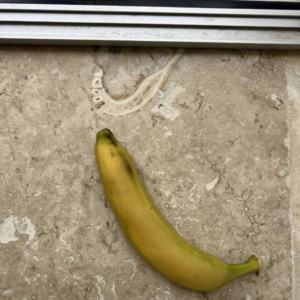
Dubbed “Japan’s Atlantis,” the Yonaguni Monument has sparked intense debate since its discovery in the 1980s. Theories about its origin range from natural formation to the possibility of it being a man-made structure created by an ancient civilization, yet its true nature remains elusive.
Background
In 1986, diver Kihachiro Aratake stumbled upon the structure while exploring the waters off Yonaguni Island in Okinawa. What he encountered resembled a pyramid, exhibiting multiple steps or layers leading to the top, with clean, symmetrical edges and angles. Standing 25 meters tall, 100 meters long, and 60 meters wide, the rock is composed of shale and sandstone dating back 20 million years, covering an area of approximately 45,000 square meters.
Ancient civilization?
Researcher Masaaki Kimura from the University of the Ryūkyūs posits that the structure is a series of monoliths constructed by humans around 10,000 years ago, possibly part of the lost continent of Mu. Mu, a mythical land akin to Atlantis and Lemuria, is said to have sunk beneath the Pacific due to cataclysmic events, with survivors spreading across the globe and founding ancient civilizations. However, this theory is often dismissed by academics as conjecture or myth.
Kimura supports his claims with various pieces of evidence, including the presence of possible animal-like statues, rock carvings, and formations resembling man-made features. Some speculate that the Jōmon people, ancient hunter-gatherers of Japan, could have built the monument.
Nature at work?
On the other hand, geologist Robert Schoch of Boston University contends that the monument is a result of natural processes, citing well-defined parallel bedding planes and jointing in the rock that create symmetrical formations resembling steps and walls. He argues that these formations are not uncommon in sandstone and are shaped by erosion and strong currents.

Conclusion
Despite two major expeditions to the site in 1986 and 1997, no definitive conclusion has been reached. While the structure’s appearance suggests deliberate construction, challenges such as the inability to ascend the steps and the possibility of pareidolia—the perception of patterns where none exist—cast doubt on its artificial origin. Additionally, the historical credibility of the lost continent of Mu is questioned.
As the Yonaguni Monument lacks special protection from the Japanese government, divers continue to explore it freely, forming their own interpretations and theories about its enigmatic existence.
News
WNBA Fans Buzz Over “Anne Splashaway” Nickname for Caitlin Clark
Upon witnessing Caitlin Clark’s three-point prowess during the Indiana Fever’s training camp, a WNBA fan took to social media to coin a creative nickname for the 2024 WNBA Draft’s top pick. Inspired by Clark’s sharpshooting skills, the fan cleverly dubbed…
“It wasn’t like this”: Angel Reese notes Clear Distinction in quality between NCAA and WNBA
Angel Reese, a standout college star and 2023 NCAA champion, made waves in the 2024 WNBA draft when she was selected by the Chicago Sky as the seventh overall pick. Since joining the team, Reese has been fully committed to…
“No deposit, no return mindset”: Indiana Fever Coach Establishes Standards for Caitlin Clark, Aliyah Boston, and Co Prior to Season Opener
All eyes are fixed on the Indiana Fever ahead of the 2024 WNBA season, following their acquisition of the highly coveted consensus number one overall pick, Caitlin Clark, in the 2024 WNBA draft. Amidst heightened expectations, head coach Christie Sides…
Dentist Finds What May Be A Prehistoric Human Jawbone Embedded In His Parents’ New Floor
The discovery of a human mandible embedded in travertine flooring during a home renovation in Europe has sparked curiosity and raised questions about its origins. The mandible was noticed by the homeowner’s son, a dentist, who recognized its unmistakable shape….
Researchers Have Successfully Created Artificial Cells That Act Just Like Human Cells
The University of North Carolina at Chapel Hill researchers have achieved a significant breakthrough in biotechnology by engineering artificial cells with life-like behavior using DNA-peptide technology. In their experiment, the team manipulated peptides and genetic material to create cell cytoskeletons,…
LA Sparks 1st Rounder Cameron Brink and Mother Groove to GloRilla’s Beats in Latest TikTok, Sporting $8,600 Hermes Bag
Cameron Brink shares a close bond with her mother, Michelle, often showcased on social media. Recently, they posted a TikTok video dancing to the rhythm of rapper GloRilla’s “Yeah Glo!” In the clip, the former Stanford standout was spotted accessorizing…
End of content
No more pages to load











